✉︎ info@preserveearth.co.uk or WhatsApp Us

Textile Recycling for Businesses: Best Solutions
Marketing Team
11/12/20254 min read


Textile waste is rapidly becoming a business compliance issue, not just a sustainability talking point. If your company handles uniforms, workwear, linens, fashion returns or production offcuts, textile recycling can reduce disposal costs, cut carbon, and prepare you for upcoming regulation. Across Europe, separate textile collection will soon be mandatory, and Extended Producer Responsibility (EPR) will place end-of-life costs on producers and importers. In the UK, corporate buyers are already asking suppliers for take-back and recycling options in contracts.
This guide explains how textile recycling works, key technologies, the regulatory landscape, and how businesses can build transparent, compliant recycling programmes. You’ll also find practical advice on partner selection, waste data tracking, and the best solutions to meet your ESG and procurement goals.
Introduction
What counts as a business textile and why it matters
Scope your materials. Textiles include uniforms, PPE, hospitality linens, soft furnishings, fashion returns, and manufacturing offcuts. Sorting these streams improves reuse rates and ensures compliant disposal. Businesses must handle these differently from consumer waste due to stricter duty-of-care regulations.
(See UK Government waste duty of care guidance for reference.)
Contamination risk. Metal trims, coatings and mixed fibres reduce recyclability. Workwear with reflective tape or logos may need pre-sorting. Implement on-site segregation to separate reusable uniforms from recyclable fabrics.
Why it matters. Commercial textile streams are typically more homogeneous, making them valuable to recyclers. Segregating by fibre type can lead to cost savings and higher resale or recycling yields.
→ Explore textile recycling options through trusted UK networks.


Mechanical recycling physically breaks textiles into fibre for re-spinning or use in insulation, padding and wipers. This works best for cotton and wool but shortens fibre length.
Learn more from WRAP’s Textile Recycling Overview.
Chemical recycling dissolves or depolymerises blended textiles (like polyester-cotton) into raw polymers, which are re-spun into near-virgin fibres. This is ideal for complex uniforms and technical fabrics but requires larger, cleaner volumes.
See Fashion for Good’s explainer for process visuals.
Business takeaway: Match your waste stream to the right process—mechanical for natural fibres, chemical for synthetics and blends. Partner with facilities that can provide end-destination traceability.
→ Request a textile stream evaluation at preserveearth.co.uk/textile-recycling.
How textile recycling works: mechanical vs chemical routes
EU Regulation. By 2025, EU nations must have systems for separate textile collection. The revised EU Waste Framework Directive mandates textile EPR schemes.
UK context. While the UK hasn’t introduced textile EPR yet, the WRAP Textiles 2030 initiative has brought retailers and suppliers into voluntary alignment. Many are now requesting circular solutions in supply chains.
Reputation and compliance. Media reports have exposed exported textile waste ending up in landfill abroad. Ensuring your recycler provides traceable, ethical routes is both good governance and good PR.
Read The Guardian’s coverage for real-world context.
→ For a compliance roadmap and partnership assessment, visit preserveearth.co.uk/textile-recycling.
The policy horizon businesses must plan for
Verify credentials. Always check that recyclers hold valid Environment Agency permits and, ideally, membership in the Textile Recycling Association.
Contract essentials:
Define accepted materials and contamination thresholds.
Request downstream transparency (reuse, fibre-to-fibre, fibre-to-fill).
Require carbon data and reporting frequency.
Ensure GDPR and data security clauses for branded stock.
Pro tip: Homogeneous batches (single-fibre workwear or linens) attract better commercial terms.
→ Connect with a UK-compliant recycling partner through preserveearth.co.uk/services.
Choosing the right partner: due diligence and contracts
Workwear, uniforms and returns: setting up a take-back
Why it’s critical: Uniforms and branded clothing can’t be resold without security checks. Set up locked collection bins at depots or offices and document end-destinations.
Processing routes:
Reuse and resale for lightly used textiles.
Fibre-to-fibre recycling for mono-materials like cotton and polyester.
Fibre-to-fill for mixed or lower-quality fabrics.
Case study: The Project Re:claim initiative shows how UK polyester recycling can close the loop domestically.
→ Need secure collection for uniforms or returns? Enquire now to start a pilot take-back programme.


Verify credentials. Always check that recyclers hold valid Environment Agency permits and, ideally, membership in the Textile Recycling Association.
Contract essentials:
Define accepted materials and contamination thresholds.
Request downstream transparency (reuse, fibre-to-fibre, fibre-to-fill).
Require carbon data and reporting frequency.
Ensure GDPR and data security clauses for branded stock.
Pro tip: Homogeneous batches (single-fibre workwear or linens) attract better commercial terms.
→ Connect with a UK-compliant recycling partner through preserveearth.co.uk/services.
Measuring impact: data, carbon, and communications
Segregate materials by fibre to boost value and recyclability.
Choose TRA-registered partners with transparent downstream reporting.
Match waste types to suitable recycling technologies.
Prepare early for EU and UK textile EPR frameworks.
Pilot a take-back for uniforms to prove concept before scaling.
Quick Takeaways
For modern businesses, textile recycling is a necessity, not an add-on. Regulatory changes and sustainability commitments make traceable recycling integral to brand credibility and compliance. The next step is practical: audit your textile flows, segregate by fibre, and begin with a small pilot. Once reporting systems are in place, expand across departments and suppliers.
Choosing credible partners ensures both compliance and measurable environmental impact. Preserve Earth connects companies to trusted UK recyclers capable of fibre-to-fibre recovery, reuse, or secure destruction.
→ Take the first step today: visit preserveearth.co.uk/textile-recycling to discuss options for your business.
Conclusion
1. What volumes are required for textile recycling contracts?
Usually a few hundred kilograms per collection or a regular weekly pickup schedule is enough for commercial recycling partners.
2. Can mixed poly-cotton uniforms be recycled?
Yes, via chemical recycling methods or blended-fibre recovery, though yields depend on fibre ratio and contamination.
3. What proof of recycling can businesses expect?
Most reputable recyclers provide weight tickets, destination reports, and certificates of recycling or destruction.
4. Are textile recycling costs tax deductible?
If waste management is part of operational expenditure, costs can generally be accounted for under normal waste disposal categories. Always confirm with your accountant.
5. How can companies reduce textile waste at source?
Invest in durable materials, standardise fabrics, and explore supplier repair programmes before recycling.
FAQs
EEA: Management of Used Textiles in Europe
Fashion for Good: Chemical Recycling Explained
Recycle Now: Clothing & Textiles
UK Government: Duty of Care Waste Guidance
References

Follow Us
Company Number: 15482817
Preserve Earth, 2025. All Rights Reserved.


